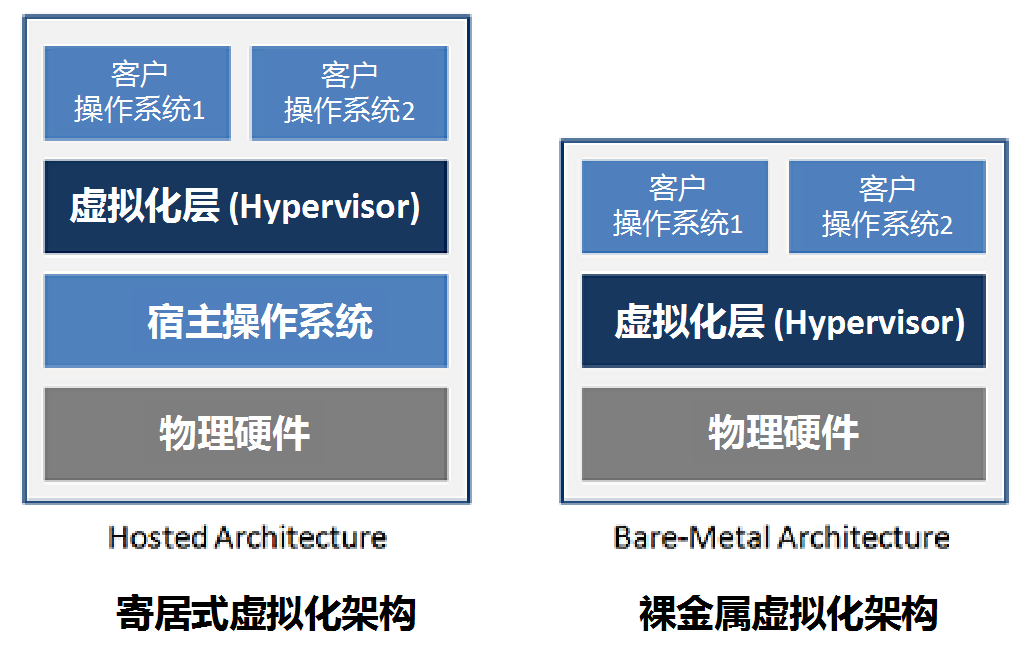 Author / Yu Cai CaiWord Count / 1233Reading Time / 3 minutesIn recent years, the concept of virtualization has become extremely popular.The most common explanation of virtualization is: transforming a single server into multiple “virtual servers” that are isolated from each other, also known as “virtual machines”.It seems quite strange. Why not just do things in a straightforward manner instead of engaging in these abstract concepts?As the saying goes, there is no smoke without fire; let’s explore further. What is Virtualization?Intel’s founder Gordon Moore once said: “The number of transistors on an integrated circuit doubles approximately every two years.”In other words, the performance of processors doubles every two years.This rapid development has led to decreasing hardware costs, even reaching a point of overcapacity. What should we do? Should we just watch resources go to waste?Let’s look at a case study.A small company wants to set up three applications: an email system, document management, and an intranet. How many servers should they buy?Since the company has few employees and light loads, one server is sufficient in terms of performance. However, if multiple applications are installed together, resource conflicts may arise, making maintenance troublesome.But if they buy three servers, it would be overkill and a serious waste. What should they do?Since the hardware performance of one server is excessive, they can partition it into three logically isolated virtual servers, each with its own operating system and applications installed. This way, even though several virtual machines share the hardware, from the application’s perspective, the CPU, memory, hard disk, network card, and other resources they use are completely independent, isolated, and conflict-free.
Author / Yu Cai CaiWord Count / 1233Reading Time / 3 minutesIn recent years, the concept of virtualization has become extremely popular.The most common explanation of virtualization is: transforming a single server into multiple “virtual servers” that are isolated from each other, also known as “virtual machines”.It seems quite strange. Why not just do things in a straightforward manner instead of engaging in these abstract concepts?As the saying goes, there is no smoke without fire; let’s explore further. What is Virtualization?Intel’s founder Gordon Moore once said: “The number of transistors on an integrated circuit doubles approximately every two years.”In other words, the performance of processors doubles every two years.This rapid development has led to decreasing hardware costs, even reaching a point of overcapacity. What should we do? Should we just watch resources go to waste?Let’s look at a case study.A small company wants to set up three applications: an email system, document management, and an intranet. How many servers should they buy?Since the company has few employees and light loads, one server is sufficient in terms of performance. However, if multiple applications are installed together, resource conflicts may arise, making maintenance troublesome.But if they buy three servers, it would be overkill and a serious waste. What should they do?Since the hardware performance of one server is excessive, they can partition it into three logically isolated virtual servers, each with its own operating system and applications installed. This way, even though several virtual machines share the hardware, from the application’s perspective, the CPU, memory, hard disk, network card, and other resources they use are completely independent, isolated, and conflict-free. This is the essence of virtualization: partitioning, isolation, encapsulation, independent of hardware.Therefore, the physical machine is usually referred to as the Host, while the virtual machine is also called the Guest.The meaning here is quite straightforward: the “Guest” is a virtual entity that resides on the “Host” and cannot exist independently of it. How is Virtualization Achieved?The core of achieving virtualization is the introduction of relevant software functionalities. This type of software is called Hypervisor, also known as the supervisor.These “supervisors” possess extraordinary capabilities, allowing them to take full control of the physical CPU, memory, hard disk, network card, and other hardware on the server, abstracting them into a logical resource pool and allocating them to each virtual machine as needed.As a result, each virtual machine can independently use its own virtual CPU, memory, hard disk, and network card, as if they were physical entities.The “supervisor” essentially acts as a bridge between the physical hardware and logical resources, which is why it is also referred to as “middleware”.Currently, there are two types of virtualization implementations: one is called hosted virtualization, and the other is called bare-metal virtualization.
This is the essence of virtualization: partitioning, isolation, encapsulation, independent of hardware.Therefore, the physical machine is usually referred to as the Host, while the virtual machine is also called the Guest.The meaning here is quite straightforward: the “Guest” is a virtual entity that resides on the “Host” and cannot exist independently of it. How is Virtualization Achieved?The core of achieving virtualization is the introduction of relevant software functionalities. This type of software is called Hypervisor, also known as the supervisor.These “supervisors” possess extraordinary capabilities, allowing them to take full control of the physical CPU, memory, hard disk, network card, and other hardware on the server, abstracting them into a logical resource pool and allocating them to each virtual machine as needed.As a result, each virtual machine can independently use its own virtual CPU, memory, hard disk, and network card, as if they were physical entities.The “supervisor” essentially acts as a bridge between the physical hardware and logical resources, which is why it is also referred to as “middleware”.Currently, there are two types of virtualization implementations: one is called hosted virtualization, and the other is called bare-metal virtualization. For hosted virtualization, there is an operating system on the physical hardware, and virtualization software (Hypervisor) is installed on top of the operating system. Multiple virtual machines are then created through the virtualization software, each with its own independent operating system, allowing applications to be deployed.
For hosted virtualization, there is an operating system on the physical hardware, and virtualization software (Hypervisor) is installed on top of the operating system. Multiple virtual machines are then created through the virtualization software, each with its own independent operating system, allowing applications to be deployed. It can be seen that this virtualization method has two layers of operating systems, where the operating system of the virtual machine resides on top of the operating system of the physical machine, and is integrated by the Hypervisor, which is aptly named hosted virtualization.For bare-metal virtualization, there is no need to install an operating system on the physical hardware; the Hypervisor is directly installed to take over the hardware and provide virtualization functionality. The Hypervisor runs directly on the bare metal, which is why it is intuitively called bare-metal virtualization.
It can be seen that this virtualization method has two layers of operating systems, where the operating system of the virtual machine resides on top of the operating system of the physical machine, and is integrated by the Hypervisor, which is aptly named hosted virtualization.For bare-metal virtualization, there is no need to install an operating system on the physical hardware; the Hypervisor is directly installed to take over the hardware and provide virtualization functionality. The Hypervisor runs directly on the bare metal, which is why it is intuitively called bare-metal virtualization. Generally speaking, while hosted virtualization may be slightly less efficient, the Hypervisor is simpler and easier to implement. Therefore, for personal and small-scale virtual machine applications, using hosted virtualization is more convenient and quick.Bare-metal virtualization does not rely on an operating system, making it very flexible, but the development difficulty of the Hypervisor virtual layer is high, and the cost is correspondingly higher, making it more suitable for large enterprise applications.That concludes this issue’s content; I hope it is helpful to everyone.— END —
Generally speaking, while hosted virtualization may be slightly less efficient, the Hypervisor is simpler and easier to implement. Therefore, for personal and small-scale virtual machine applications, using hosted virtualization is more convenient and quick.Bare-metal virtualization does not rely on an operating system, making it very flexible, but the development difficulty of the Hypervisor virtual layer is high, and the cost is correspondingly higher, making it more suitable for large enterprise applications.That concludes this issue’s content; I hope it is helpful to everyone.— END —